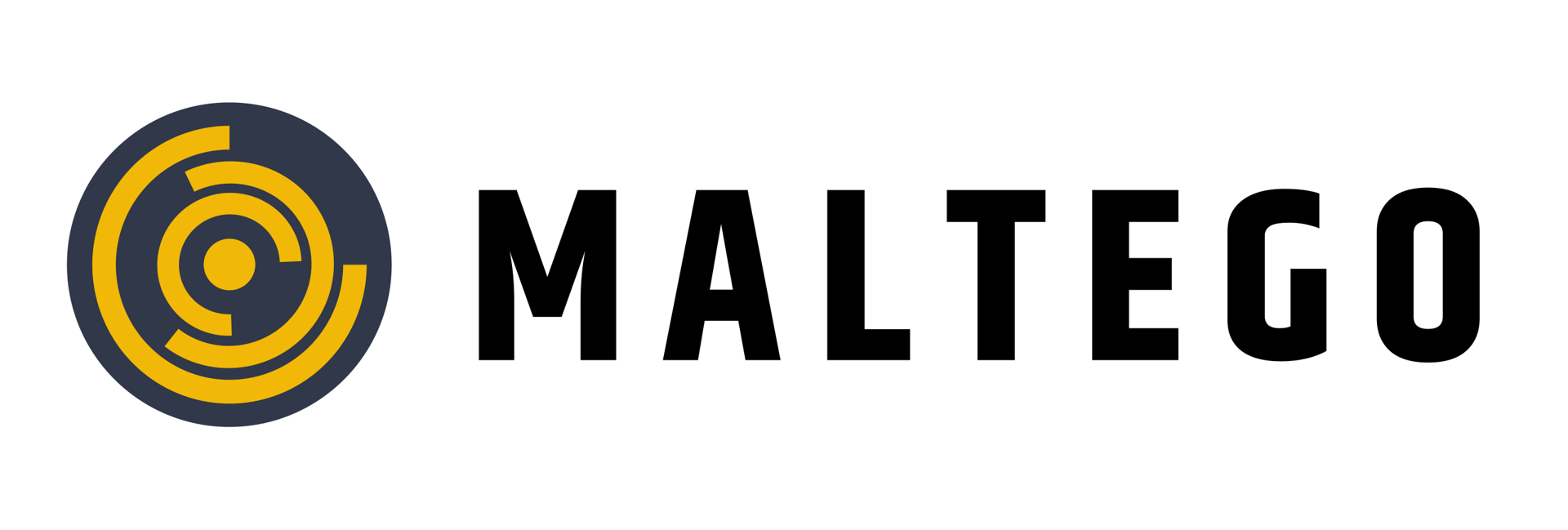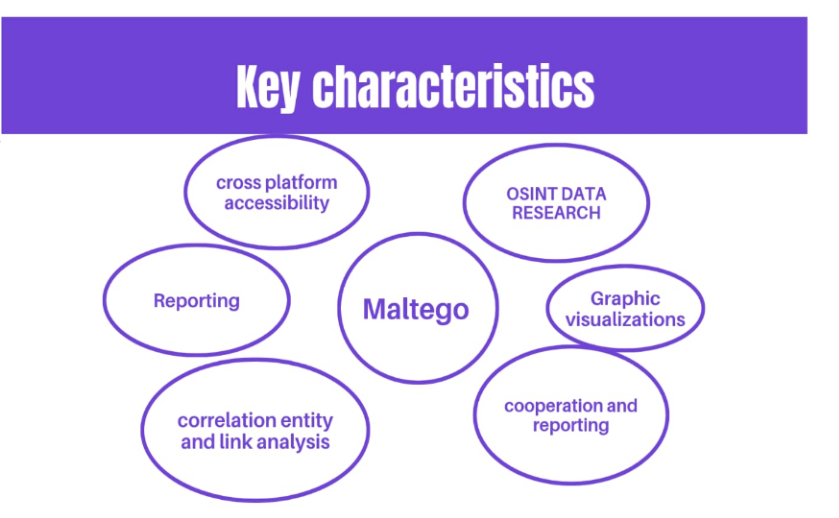Maltego: A wonderful framework for intelligence and OSINT research
Maltego is a platform for open-source intelligence (OSINT) and cyber investigations developed by Maltego Technologies GmbH, headquartered in Munich, Germany. This is used by enterprises in both the private and public sectors to support OSINT investigations, including cyber threat intelligence and law enforcement. It is utilized by the FBI, INTERPOL, banks, and a number of DOW 30 companies. Software can manage complicated analysis of large datasets for expert analysts as well as basic OSINT investigations for novice users. It enables you to integrate a variety of external data sources provided by Maltego with internal data. Additionally, it has capabilities for collecting, tracking, and archiving social media intelligence in real time for risk management, public safety, and legal prosecutions.
3/2/20257 min read

What is Maltego?
Paterva of Pretoria, South Africa, created the open-source intelligence and forensics program Maltego. It focuses on providing a library of transforms for discovering data from open sources and visualizing that information in a graph format." - Wikipedia.
Information gathering is essential to successful penetration testing. Before initiating an attack, a proficient hacker or penetration tester always gathers as much information as possible about the target.
One of the best tools for gathering and mining data is Maltego. Due to data connections with Shodan, WHOIS, TinEye, The Wayback Machine, VirusTotal, ATT&CK, MISP, Pipl, Orbis, and other services, users may query any type of data in Maltego alone.
Maltego's major characteristics
1. Mapping of Entity Relationships


One of Maltego's most unique features is its ability to visually trace the connections between various digital entities. These include things like domain names, IP addresses, email addresses, phone numbers, social media profiles, and even physical place.
Exploration that is dynamic: You may quickly add new things to the graph as you find them while conducting your research, and you can watch as the map changes in real time. Visual Graphs: By presenting the interconnections between things in a graphical fashion, Maltego helps users quickly understand the connections.
Link Analysis: The visual graphs make it easier to spot connections that might not be immediately apparent, such those between people, organizations, or groups.
This tool is very helpful when looking into networks of cybercriminals.
2. Integration of the Dark Web and Deep Web
Access to Dark Web Data: Maltego can provide data from anonymous networks like Tor and I2P and link to several dark web search engines. This makes it easier to look into any unlawful activities occurring in these hidden places.
Crawl Dark Web Markets: Maltego can search dark web markets for information about illegal activity, such as data breaches and cybercrime schemes.
Deep Web Crawling: Maltego enables users to capture crucial information for investigations by providing access to databases and hidden services that are not indexed by traditional search engines.
4. Data Visualization
Explore Connections: Maltego can find related data, such linked email addresses, social media profiles, or links to other websites, on a single item (like an IP address or domain).
disclose Hidden Relationships: You can uncover relationships that might otherwise go unnoticed by constantly switching between topics. Investigating threat actor networks, fraud schemes, and cyberattack infrastructures requires this.
Investigative Depth: Users can delve deeper into their research by pivoting, investigating leads that might not be immediately obvious from the primary object.
3. Pivoting
Graphical Interface: Maltego produces simple, visually appealing graphs that simplify complicated data connections for quick comprehension. Entities are represented by nodes, and they are connected by edges.
Customizable Layouts: You may change the arrangement and appearance of your graphs based on the goal of your research. This comes in quite handy when working with big datasets.
Interactive graphs allow viewers to zoom in, rotate, and filter data as required. When dealing with big, complex networks and databases, this degree of engagement is crucial.
5. Cooperation and Report Drafting
Collaboration: Maltego allows users to share their study with others. Graphs can be exported to share with colleagues or external stakeholders. The capacity to have several team members contribute to a single inquiry is crucial for larger businesses or threat intelligence teams.
Reports: Using the integrated reporting features of the application, you may produce comprehensive reports based on your results. These reports may include charts, graphs, and other visual representations of your data to help others understand the findings.
Export Options: Maltego offers a wide range of export formats, including PDF, CSV, and PNG, which you may use to export your graphs, data, and reports for analysis, documentation, or presentation.
6. Security and Privacy
Secure Data Collection: You may collect data with Maltego without revealing your identify or location. Many modifications use public databases, ensuring your searches remain anonymous.
Configurable Privacy Settings: Maltego allows users to control how their data is shared and stored, ensuring that sensitive information is protected throughout the investigation.
Encryption: Maltego reduces the chance of data breaches by ensuring that data is encrypted while exporting or collaboration.
7. Scalability and Performance
Scalability: Maltego is built to scale effectively, whether you're dealing with a small inquiry with a few entities or a large-scale operation with thousands of data points.
Performance Optimization: Maltego's engine is performance tuned, so even queries with a lot of resources may be processed without any issues. Processing times are shortened for extensive investigations by allowing users to select data to concentrate on particular entities.
Who uses Maltego and why?


1. Cybersecurity


For cybersecurity experts, Maltego is a vital tool. Finding vulnerabilities, tracking down malicious behavior, and understanding the connections between threat actors, malware, and compromised systems are all made easier with its assistance. Security analysts can strengthen their defenses against potential assaults by visualizing the attack surface.
Threat Intelligence: Maltego gives users the ability to gather data on known threats and attackers, monitor their TTPs, and take proactive measures to thwart assaults.
issue Response: In the event of a security issue, Maltego can assist investigators in determining the origin of the breach, assembling the attack chain, and estimating the extent of the incursion.
2. Digital Forensics
Device Analysis: Maltego can help digital forensic experts recreate digital activity timelines, trace communication between devices, and connect devices to suspects.
Evidence Correlation: By comparing digital evidence from different instances, the application enables investigators to find recurring themes and shared connections.
Attribution: Maltego makes it easier to track down the source and movement of digital evidence, which might help identify criminal suspects.


Our complete article on Cyber Security In Detail Here


Phishing Attacks: Maltego may be used to gather information on potential phishing targets, including social media accounts, email addresses, and corporate ties.
Persona Creation: To help create convincing social engineering attacks, ethical hackers can create thorough personas using the data they have gathered.
4. The law enforcement
Maltego is used by law enforcement for criminal investigations. By integrating information from several sources, they may build connections between suspects and criminal groups and produce a comprehensive picture of criminal activities.
Criminal Networks: In organized crime investigations, Maltego assists law enforcement in identifying connections between suspects, tracking down money laundering, and mapping out criminal networks.
Cold instances: By looking through unsolved instances and using Maltego to uncover new information and connections, investigators may be able to solve cold cases.


How to Use Maltego
Now that we've covered Maltego's capabilities and use cases, let's look at how to utilize it in practice. Here's a step-by-step instruction for getting started with Maltego. Launch
1. Installation
Maltego must be installed on your computer before you can use it. Maltego comes in many versions for Linux, macOS, and Windows. Follow the on-screen directions, launch the installation procedure, and download the relevant installer from the Maltego website.
2. Initiation
Maltego after installation, then register or sign in if you already have an account. To use all of Maltego's features, you must activate your license. Maltego comes in both free and paid editions; the
3. Launching a Fresh Probe
By choosing "New Graph" from the File menu, you will construct a new graph to start a fresh study.
4. Adding Entities
Entities are the building blocks of your investigation. You can add entities to your graph by using the “Add Entity” feature in the toolbar. Maltego provides a wide range of predefined entity types, or you can create custom entity types to suit your specific needs.
5. Executing Transforms
You collect information and relationships for your entities using transforms. Select one or more entities on the graph, then right-click and select "Run Transform" to begin executing transformations. A list of the transformations that are possible for the chosen entity type will be shown by Maltego. To retrieve data from a particular data source, select the relevant transform.
6. Examining the Chart
Your graph will start to take shape as you execute transformations. In order to depict relationships, you may alter things, group them into clusters, and join them using edges. An interactive workspace for examining the gathered data is offered by the graph view.
7. Reporting and Exporting
Once your investigation is complete, you can export your findings to share with others. Maltego offers various export options, including PDF, CSV, and Excel formats. This is useful for generating reports or sharing your insights with colleagues or clients.
Check Out Other Articles
1. How to recover Snapchat Id here
2. Cain and Abel Software For Password Recovery here
3. Tenable Nessus: Best Vulnerability Scanning Tool here
3. Inspections of Social Engineering
Frequently asked questions
1. What is Maltego and why is it valuable for OSINT research?
Maltego is a powerful tool for data mining and link analysis. It is designed to describe various relationships between data points online.
4. What data sources does Maltego integrate with?
Maltego can be integrated with different data sources such as DNS Records , WhoIs Databases , Social Media , Dark Web Resources and Platforms for Threat Intelligence.
2. Is Maltego free to use?
Maltego provides a free version known as Community Edition (CE) with limited features. While it has also paid version (Classic and XL) They provide deeper data access and large graph study.
5. Can Maltego be used for ethical hacking?
Yes , Maltego can be used for ethical hacking in various process such as footprinting, reconnaissance, and gathering information about targets before conducting penetration testing but always with legal considerations.
3. How does Maltego help in cybersecurity investigations?
Maltego helps Cyber Security Experts to map digital footprints , track different cyber threats , analyze relationships between different malicious activities and perform reconnaissance on potential vulnerabilities.
6. What are Maltego Transforms?
Transforms are known as automated queries in maltego. They fetch and link data from various sources , allows users to discover hidden connections and visualize relationships smoothly.
Conclusion
Maltego is a potent tool for link analysis and data visualization with a broad range of uses, including competitive intelligence, social engineering evaluations, cybersecurity, and digital forensics. Professionals in a variety of fields can benefit greatly from its features, which include data integration, graphical visualization, and collaboration capabilities.
